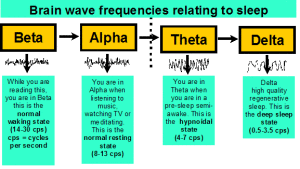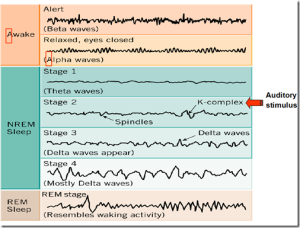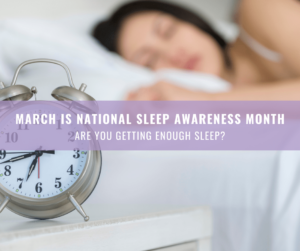When awake, most people exhibit the brain wave patterns that can be classified into two types of waves, beta and alpha. Beta waves are those associated with day to day wakefulness. These waves are the highest in frequency and lowest in amplitude, and also more desynchronous than other waves. That is, the waves are not very consistent in their pattern. This desynchrony makes sense given that day to day mental activity consists of many cognitive, sensory, and motor activities and experiences, and, thus, when awake, we are mentally desynchronous as well. During periods of relaxation, while still awake, our brain waves become slower, increase in amplitude and become more synchronous. These types of waves are called alpha waves. For example, such brain waves are often associated with states of relaxation and peacefulness during meditation and biofeedback.
The first stage of sleep is characterized by theta waves, which are even slower in frequency and greater in amplitude than alpha waves. The difference between relaxation and stage 1 sleep is gradual and subtle. As the sleeper moves to stage 2 sleep theta wave activity continues, interspersed with two unusual wave phenomena. These phenomena, which occur periodically every minute or so, and are defining characteristics of stage 2 sleep, are termed sleep spindles and K complexes. The former is a sudden increase in wave frequency, and the latter is a sudden increase in wave amplitude. Stages 1 and 2 are relatively “light” stages of sleep. In fact, if someone is awoken during one of these stages, he or she will often report no being asleep at all.
Stage 1 is light sleep where you drift in and out of sleep and can be awakened easily. In this stage, the eyes move slowly and muscle activity slows. During this stage, many people experience sudden muscle contractions preceded by a sensation of falling. The first stage of sleep is characterized by theta waves, which are even slower in frequency and greater in amplitude than alpha waves. The difference between relaxation and stage 1 sleep is gradual and subtle. As the sleeper moves to stage 2 sleep theta wave activity continues, interspersed with two unusual wave phenomena. These phenomena, which occur periodically every minute or so, and are defining characteristics of stage 2 sleep, are termed sleep spindles and K complexes. The former is a sudden increase in wave frequency, and the latter is a sudden increase in wave amplitude. Stages 1 and 2 are relatively “light” stages of sleep. In fact, if someone is awoken during one of these stages, he or she will often report not being asleep at all.
In stage 2, eye movement stops and brain waves become slower with only an occasional burst of rapid brain waves.
When a person enters stage 3, extremely slow brain waves called delta waves are interspersed with smaller, faster waves.
In stage 4, the brain produces delta waves almost exclusively.
Stages 3 and 4 are referred to as deep sleep or delta sleep, and it is very difficult to wake someone from them. In deep sleep, there is no eye movement or muscle activity. This is when some children experience bedwetting, sleepwalking or night terrors. In 2008 the sleep profession in the US eliminated the use of stage 4. Stages 3 and 4 are now considered stage 3 by them.
Slow wave sleep comes mostly in the first half of the night, REM in the second half. Waking may occur after REM. If the waking period is long enough, the person may remember it the next morning. Short awakenings may disappear with amnesia.
In the REM period, breathing becomes more rapid, irregular and shallow, eyes jerk rapidly and limb muscles are temporarily paralyzed. Brain waves during this stage increase to levels experienced when a person is awake. Also, heart rate increases, blood pressure rises, males develop erections and the body loses some of the ability to regulate its temperature. This is the time when most dreams occur, and, if awoken during REM sleep, a person can remember the dreams. Most people experience three to five intervals of REM sleep each night.
Infants spend almost 50% of their time in REM sleep. Adults spend nearly half of sleep time in stage 2, about 20% in REM and the other 30% is divided between the other three stages. Older adults spend progressively less time in REM sleep.




